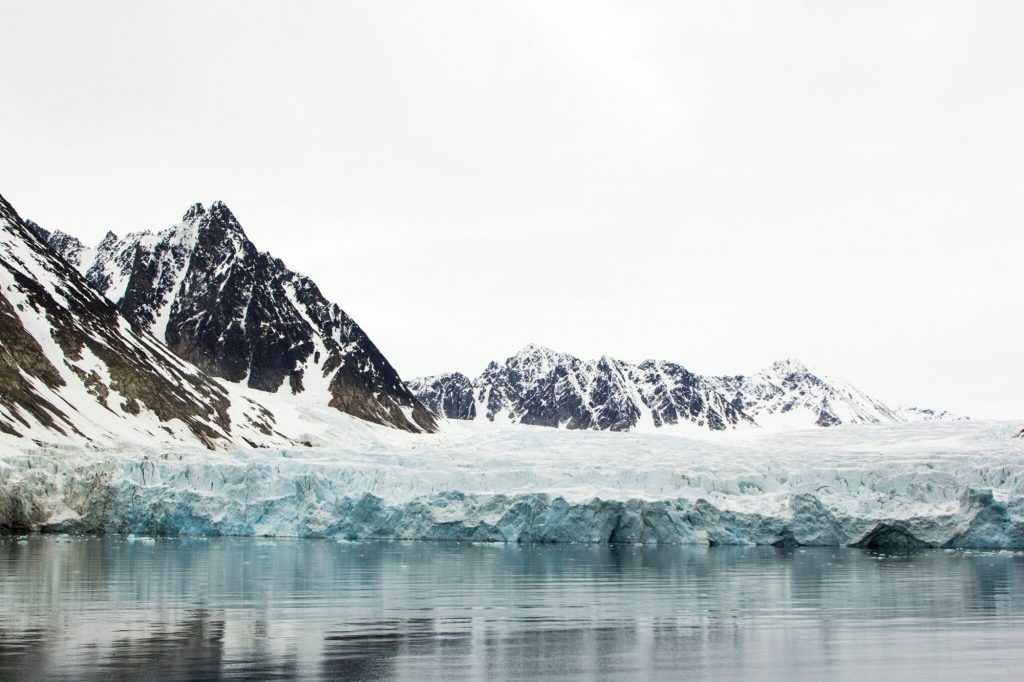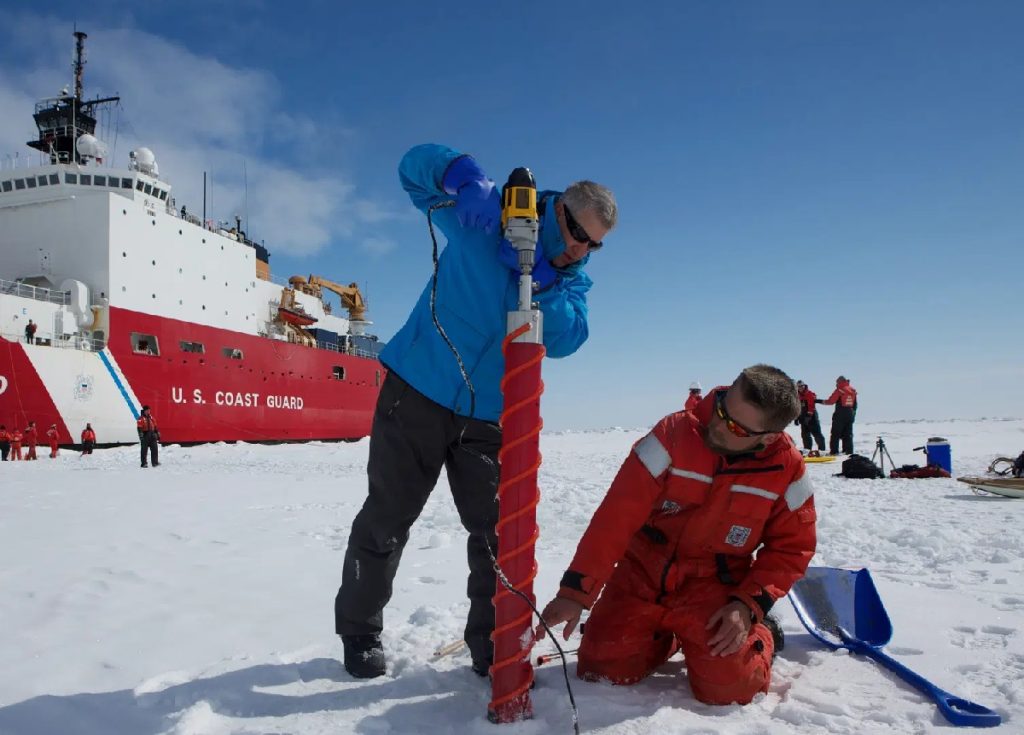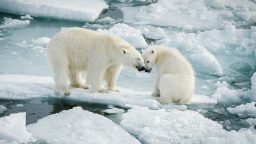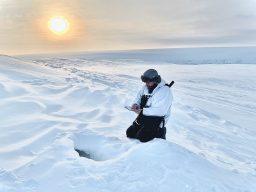
The Waggonway glacier is one of many glaciers in Svalbard that have retreated marketly over the past century. Photo: Jørn Berger-Nyvoll / UiT The Arctic University of Norway.
Great uncertainty
About 10 percent of Earth’s land area is covered by glaciers and ice sheets, and this ice accounts for almost 70 percent of all fresh water on the planet. When rising temperatures cause the ice to melt, it creates obvious challenges such as rivers changing their course and flow patterns, more fresh water in the sea – and constantly rising sea levels.
To make matters worse, there has been little knowledge of what other consequences melting ice has for the globe’s climate and carbon cycle. The glaciers have often been seen as white holes on the map, which could be completely ignored in the global carbon budget.
“Thirty years ago, we thought glaciers were sterile environments where there was no life. We didn’t think they held large amounts of carbon and we knew little about the dynamic life of a glacier.”Jemma Wadham, glaciologist and professor at UiT The Arctic University of Norway.
“Now we know that isn’t true,” she says. “On the contrary: there are thick layers of deposits beneath the ice caps. In Antarctica, for example, those layers are several kilometres thick.”
These deposits are teeming with microbes and they store large amounts of carbon, including the potent greenhouse gas methane. What happens to all this when the ice melts?
New discoveries like this create enormous uncertainties, and there is an urgent need to obtain more knowledge. How much carbon is trapped under these ice caps? And in what form? Is it in the form of methane hydrates that become unstable when the ice thaws and retreats? And what happens when the ice recedes and exposes the ground below. How will that affect the emission of greenhouse gases?
Melting of ice obviously causes changes in the glaciers, but it also has indirect effects on the carbon cycle.
“When the glaciers melt, it changes the nutrient supply to the coastal sea,” Wadham explains, then asks, “How does that affect vulnerable ecosystems and food production? How does it affect an ecosystem that humanity depends for resources we need?”
Bringing together the best researchers in the world

Finding answers is urgent, and now UiT has received highly sought-after funding from the Research Council of Norway to bring together the world’s best researchers in the field.
In the autumn of 2022, UiT got the go-ahead to establish a Centre of Excellence that will be called iC3 – Centre for Ice, Cryosphere, Carbon and Climate. The Centres of Excellence receive long-term funding for up to ten years and iC3 will be led by Wadham and associate professor Monica Winsborrow.
The status as a Centre of Excellence comes as a result of many years of research collaboration, and the centre will combine research competence from UiT, the Norwegian Polar Institute and other partners in Norway and internationally.
iC3 is tasked with filling a large knowledge gap in polar science, and doing that will require researchers from many different disciplines.
“You must have scientists who understand the melting of ice, scientists who understand biological and chemical processes, scientists who work with sediments and the bedrock below, and you must have oceanographers with insight into marine processes,” Wadham explains.
With data collected from all these research disciplines, scientists can improve the climate models so they provide a better overall understanding of how the melting of the ice masses affects the carbon cycle.
Influencing international climate policy
Given the uncertainty related to how melting glaciers and ice caps affect the global carbon budget, these effects are not included in the extensive reports from the United Nations’ Intergovernmental Panel on Climate Change (IPCC).
These reports are described as the most important scientific basis for the design of international climate policy.
Wadham and other researchers have already contributed to the IPCC’s special report on oceans and the cryosphere. There, they have begun to look at how the melting of the ice will impact the carbon cycle, but because the data are sparse, the figures are uncertain and highly variable.
“We are very uncertain about how large the carbon emissions due to the melting of the ice may be. We assume that large amounts of methane hydrates are stored under the ice, but we don’t really know. The influence of the carbon cycle on marine ecosystems is also very uncertain. We can make assumptions based on the research we have already conducted, but we need to do more research to reduce the uncertainty,” says Wadham.
An important part of a long-term investment such as a Centre of Excellence is to smooth the way for future researchers.
“This is at the heart of iC3,” says Monica Winsborrow, who will lead the centre along with Wadham. “Our ambition is to cultivate and train a new generation of interdisciplinary polar researchers, who will work together to convey the importance of this research to politicians and the public, and get them engaged.”
iC3 – Centre for Ice, Cryosphere, Carbon and Climate will begin operating in 2023.
By Tomas Rolland Original


